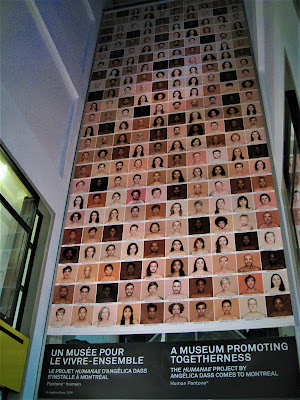MMFA: SHARING THE MUSEUM PROGRAM
20th ANNIVERSARY
September 25, 2019
The Montreal Museum of Fine Arts (MMFA) is celebrating 20 years of its Sharing the Museum program. Since launching in 1999, it has enabled over 275,000 vulnerable people to enjoy a broad range of free arts activities created just for them. Thanks to Bell’s renewed support through a major donation of $1 million over five years, even more people who are usually excluded from cultural experiences can enjoy the benefits of art.
Sharing the Museum program is the result of a relationship between the MMFA’s expert teams and over 600 non-profit organizations, CLSCs, and hospitals. This program has constantly evolved and expanded to new audiences since its creation, and has become an international model for museum initiatives in accessibility and inclusion. It embodies the MMFA’s committed vision of a museum that is open and accessible to everyone, including those marginalized due to social, economic or health factors.
Through the program, the Museum offers many free activities which are adapted to the needs and interests of people experiencing hardship. They include guided tours of the collections, art workshops led by mediators or art therapists, and special concerts. Held both at the Museum and also at the community at large, these activities offer an opportunity to socialize, make friends, but most importantly to learn and create in a welcoming and safe space. They stimulate the participants’ creativity and help them regain their self-confidence.
The MMFA program Sharing the Museum is designed for children, adults and seniors from disadvantaged communities and neighbourhoods, at-risk youth, immigrants and refugees, women in crisis, people who are developing literacy skills, people experiencing homelessness, people with physical or mental health issues or with cognitive impairments such as Alzheimer's, people with physical or intellectual disabilities as well as family caregivers.
The program has also been the subject of research articles published in journals such as The Arts in Psychotherapy and The Journal of Museum Education. In 2018, Concordia University researcher Darla Fortune carried out a study on the impact of this program from the standpoint of inclusion and a sense of belonging and found that the program’s participants felt accepted and valued.
A work by Bahar Taheri to mark 20 years of Sharing the Museum
To thank their partners who over the past two decades enabled thousands of children, adults and seniors to experience the Museum in a special way, and to celebrate the great contribution of these groups and the program’s, the MMFA has acquired The Lady of the Harbour (2018) by Iranian artist Bahar Taheri, who lives in Montreal. This recent addition to the collection is displayed in the new Stephan Crétier and Stéphany Maillery Wing for the Arts of One World as of November 9.
A new mural honouring our partners has also been created by the collective EN MASSE, in the Bell Lounge of the MMFA’s Michel de la Chenelière International Atelier for Education and Art Therapy.
Bell: an essential partner of Sharing the Museum
A MMFA partner since 2010 and a major patron of this program for the past five years, Bell has announced that it will renew its partnership until 2023 with a donation of $1 million over the next five years. This generous contribution will enable the Museum to maintain and multiply its community and wellness projects.
Click on images to enlarge them.
Hover over images for description and credits.
For more information about the Montreal Museum of Fine Arts' exhibitions and activities, visit the museum's website.














































